In this lesson, we’re going to show you how to say “hello” in Korean, one of the basic greetings that you should learn.
Learning how to say “hello” in the Korean language helps you make friends, greet acquaintances, and seem like an overall warm and friendly person! It’s very likely one of the words you will use most often when visiting South Korea or speaking Korean.
We have a free PDF guide for how to say “hello” in Korean that you can take with you on the go. Check it out below:
If you’ve been checking out language courses, one of the first phrases or words that they teach is conversation starters or greetings, like saying “hello.”
Contents
How to say “Hello” in Korean?
Generally, there are three ways to say “Hello” in Korean: The formal form 안녕하십니까 (annyeonghasimnikka), the standard way 안녕하세요 (annyeonghaseyo), and the informal way 안녕 (annyeong).
When it comes to Korean greetings, it’s best to use the standard way in most situations because you can use it for almost everyone.
Remember that Korean is a hierarchical language. That means you need to use the proper formality level, or you can come off as offensive for being too casual or too formal to people you know.
This lesson is written using both Hangeul (the Korean Alphabet) and romanized English. You don’t need to know Hangeul to read the words, but it will help you with your Korean pronunciation if you plan to learn Korean.
“Hello” in Korean (Formal)
The formal way to say “hello” in Korean is 안녕하십니까? (annyeonghasimnikka). This is often used in announcements, speeches, or on the news in South Korea.
Listen here:
This way of saying “hello” uses formal language and can be used the first time you greet someone you don’t know. You would use 안녕하십니까 (annyeonghasimnikka) when you want to show high levels of respect to the other person.
Note that this formal way to greet someone is actually a question. You may hear it said as a statement or a question. If you’re asking it as a question, you should have an upward intonation at the end of the word. When someone greets you using this expression, you can reply with 안녕하십니까 (annyeonghasimnikka).
You can use this greeting with people at any time of day. It can be similar to “good morning,” “good afternoon,” or “good evening.”
Pronunciation tip: In the 4th syllable, the final consonant sound is similar to “m” instead of “b.” When followed by an ㄴ, the ㅂ letter sounds like an ‘m’ rather than a “b.”
“Hello” in Korean (Standard)
안녕하세요 (annyeonghaseyo) is the most common way of saying “hello” in Korean. This version uses standard language. This is probably one of the first Korean greetings that anyone studying Korean would learn.
Listen Here:
You can use this greeting with people in any situation. For example, you might use it with a convenience store clerk, a new business associate, or your Korean teacher. You can use it with a new acquaintance you are meeting for the first time or someone you’ve known for a while.
The actual meaning of the phrase has two parts. The first part is 안녕 (annyeong), which means “well-being” or “peace.” The second part is 하세요 (haseyo), which comes from the verb 하다 (had), meaning “to do.” Put them together, and you have “to do well-being.”
It’s similar to asking, “Have you been doing well?”.
The 세 (se) part of the word comes from 시 (si), a piece of grammar often inserted into Korean words to show more respect. The 시 (si) character is used when speaking to somebody older than you or about someone you want to show respect for. It can also be used when asking a question to show extra politeness.
Sometimes, you will see the standard word for “hello” written with a question mark after it. Since it is a question, you can reply with 네, 안녕하세요? (ne, annyeonghaseyo? | yes, hello?).
Note: This is a bit different than the equivalent English greeting because you wouldn’t use this phrase to say goodbye in Korean. For standard formality in Korean, you’d say goodbye using a different expression.
What is Annyeonghaseyo?
Annyeonghaseyo is the romanization of the Hangeul 안녕하세요, which means “Hello.”
How do you greet someone in Korean?
You normally greet someone by saying 안녕하세요 (annyeonghaseyo). You may also bow as a sign of respect.
If it’s your first time meeting the person you’re greeting, you might want to shake their hands. But make sure to use your right or both hands to show respect.
Check out this article on How to Introduce Yourself in Korean to learn the proper way of making an introduction in Korean.
“Hello” in Korean (Informal)
The casual way to say “hello” using informal language is 안녕 (annyeong).
Listen Here:
You may notice that this version is the building block for the standard and formal ways of this greeting.
We recommend learning the standard Korean version of this phrase before the informal version. The reason is almost all people can use standard Korean. You would only use informal Korean with people with close friends or those lower than you in social rank. Otherwise, it can be considered rude.
This means you would use informal Korean “hello” with people younger than you and/or who are close to you. You may use it with someone you know for a long time if you are on close terms. It’s similar to referring to them by name instead of title.
The low level of politeness using this phrase can also be interpreted as a sign of closeness. You might use this for texting close friends or when you see them in person. Using a more formal version of “hello” with friends or someone you are close with might make them feel distant.
What is the difference between 안녕 (annyeong) and 안녕하세요 (annyeonghaseyo)?
안녕하세요 (annyeonghaseyo) is the formal and polite form of greeting someone. This is the phrase that is used most often with people. 안녕 (annyeong) is the informal way that is used with people you are close with.
Is “annyeong” hello or goodbye?
안녕 (annyeong) is the informal greeting translating to “hello.” However, it can also be used as an informal way of saying “bye.” You can’t use it with anybody, though, so be mindful of who you’re saying it to.
Can older people use “annyeong” for someone younger?
It’s possible that people higher up in the social rank may talk to you in informal Korean. For example, an older man or woman may say “hello” to you by saying the more casual and informal version of “hello,” which is 안녕 (annyeong).
In that case, you should still reply with 안녕하세요 (annyeonghaseyo). It shows good manners to greet people older than you with the more respectful version of these phrases.
How to say “hi” in Korean
The equivalent of “hi” in Korean would be 하이 (hi) or 안녕 (annyeong). You only say “hi” to people that you’re close to. In the same way, 하이 (hi) or 안녕 (annyeong) is a bit informal, so make sure to use it with someone younger than you or lower than you in the social hierarchy.
How to pronounce “hello” in Korean
There are three ways to say “hello” in Korean. Listen to the audio clips below and practice saying these phrases yourself.
| English | 한국어 (Korean) | Formality |
|---|---|---|
| Hello | Formal | |
| Hello | Standard | |
| Hello | Informal |
The way you say the Korean word for “hello” changes based on who you are speaking with. This is because there are different ways of speaking depending on where you fall in the social hierarchy. You would also greet someone differently the first time you meet them than the greetings you would use with close Korean friends.
Generally speaking, the more formal versions of the words are longer and commonly used with someone you want to show respect to. The informal versions are shorter and more casual phrases commonly used to greet friends or someone with whom you are on close terms.
Sound complicated? Not to worry! We’ll simplify it for you so you can learn the most common ways to say “hello” in Korean. Check out the video below!
For more videos like this, check out our YouTube Channel. We upload new videos with great Korean content regularly.
How to write “hello” in Korean
To write the English word “hello” in Hangeul (the Korean alphabet), you can write 헬로 (hello).
You can write 안녕하세요 for annyeonghaseyo, which is the standard way of saying “hello” in Korean.
If you want to write it in a more formal way, you can write 안녕하십니까 for annyeonghasimnikka.
How to say “hello” in Korean when on the telephone
The Korean word for “hello” when answering the phone is 여보세요 (yeoboseyo).
Listen Here:
Yeoboseyo Meaning
Yeoboseyo is a polite way to answer the phone, even if you don’t know who the caller is. This is written as 여보세요 in Hangeul. You can use it with friends, family members, and strangers. Be careful not to use this greeting in person —phone calls only!
If you’re texting or making phone calls, make sure you know basic Korean numbers so you can exchange phone numbers.
More Ways to Say “Hello” in Korean
Once you are familiar with the informal, standard, and informal ways of saying “hello,” you may want to add many other basic Korean greetings to the mix. You can choose the version of “hello” based on the setting. For example, you might use one version for people you don’t know who you would interact with within public places and another with close friends and family at home.
You might use some of these on their own, while others you may combine with an 안녕하세요 (annyeonghaseyo).
“Good Morning” in Korean
“Good Morning” in Korean is 좋은 아침이에요 (joeun achimieyo). However, it’s not used quite the same as in English, but it is similar.
Listen here:
The actual meaning of the phrase is “It is a good morning.” In English, we’d use this as a greeting. In Korean culture, you can use it as a greeting as well, but it’s not nearly as common. You can say this to greet friends or to people older than you.
It is made up of the adjective 좋다 (jota), which means “good,” the word 아침 (achim), which means “morning,” and the verb 이다 (ida), which means “to be.”
2. “Did you sleep well?” in Korean
The question “Did you sleep well?” in Korean is 잘 잤어요? (jal jasseoyo)? It’s made up of the word 잘 (jal), meaning “well,” and the verb 자다 (jada), meaning “to sleep.”
Listen here:
The formal Korean version of this is 안녕히 주무셨어요 (annyeonghijumusyeosseoyo)? You would say this to ask if the other person slept well.
Usually, you’d use this phrase with people you don’t know well. You might also use it with people much older than you, and you want to show respect.
3. “Long time no see” in Korean
The expression “long time no see” in Korean is 오랜만이에요 (oraenmanieyo). You could use this when talking to someone you’ve met but haven’t seen in a while. You might use this with someone that you run into on the street.
Listen here:
If you want to use a more formal speech, you can also say 오랜만입니다 (oraenmanimnida).
4. Cute way to say “Hello” in Korean
If you want to practice your aegyo, then you can say 안뇽 (annyong) to say “hello.” This is a way of pronouncing this greeting in a cute and adorable way.
Listen here:
Use this informal and extremely cute version of hello in Korean with those you are close to.
5. “Have you eaten?” in Korean
The question “Have you eaten” in Korean is 밥 먹었어요? (bap meogeosseoyo?). However, most of the time, it’s used as a common way to say hello in Korean. Use it as a greeting with people you know well already.
Listen here:
You may hear this in Korean dramas and be confused as to why they’re asking about eating. This is one of the cultural subtleties that makes it worthwhile to learn Korean, so you can watch K-Dramas without subtitles.
How do you say, “Hello, how are you?” in Korean?
The standard way to say “Hello, how are you?” in Korean is 안녕하세요, 잘 지냈어요? (annyeonghaseyo, jal jinaesseoyo).
If you want a more formal way of saying “Hello, how are you?”, you can say 안녕하십니까, 잘 지내셨어요? (annyeonghasimnikka, jal jinaesyeosseoyo?).
Wrap Up
Congratulations! You now know how to say “hello” in Korean. We hope you learned a bit more about Korean culture, too!
Since there are few ways to say it, it may take some time and practice to get them right. If you are unsure of which one to use, then just stick to 안녕하세요 (annyeonghaseyo) as your go-to phrase since you can use it in all situations.
Are you ready to learn other Korean greetings? If you liked this, then you should love our articles on other Korean Greetings like 만나서 반갑습니다 (mannaseo bangabseubnida | Nice to Meet You) or 좋은 아침이에요 (joeun achimieyo | Good morning).
What Korean greeting will you be using today? Let us know in the comments below.
Happy greeting!

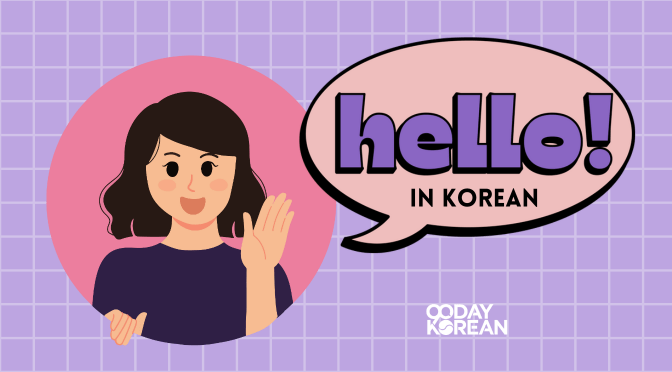
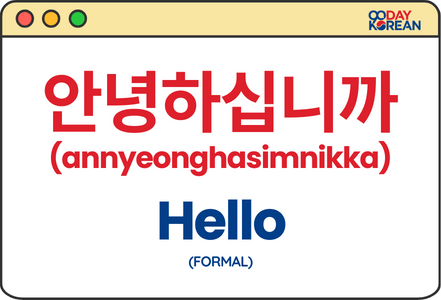
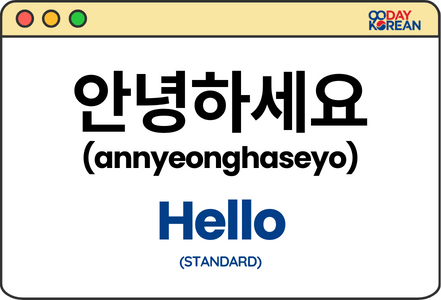
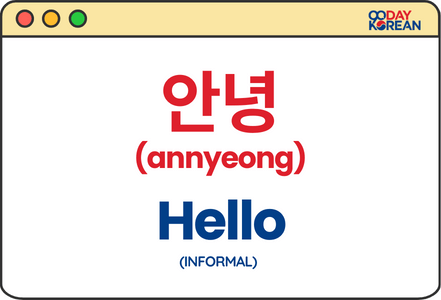


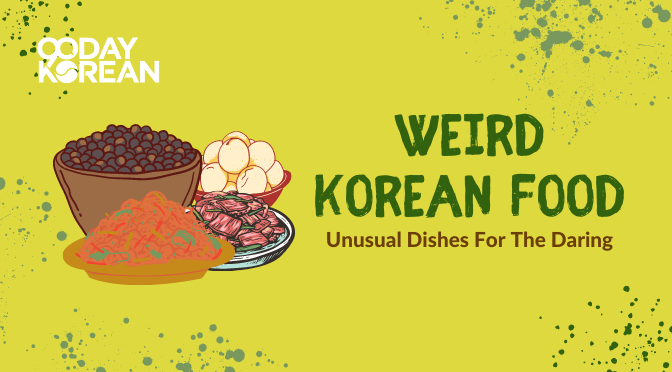

i am using this website for the first time and i was just on korean phrases and wondering why so many words were not the same i learnt but then i discovered this and i have learnt so much so thank you i will defiantly be using this so much with my korean learning sadly my computer keyboard dont have any korean keys cause i would have say thank you in korean but thank you all i need to do now is keep practicing :)))))
Thanks for sharing and for your kind words! ^^ If you want, you can read our article on Korean Keyboard: Learn how to type on your phone, tablet, & computer. It contains a guide on how to install a Korean keyboard on your device.
To practice your Korean skills, you can also check our article on Korean Practice – How to effectively use your language skills. You can also check our blog and visit our YouTube channel for articles and videos with great Korean content.
thank you! this really helped me to talk casually. ^-^♡
Awesome, thanks for your kind words. ^^ If you want to learn to talk casually and practice your reading skill, you can read these articles called Korean Phrases – Basic Expressions and Sentences for Travel & Everyday Life with Audio and How to Speak Korean – Online Guide for Conversational Fluency which contain useful Korean phrases for everyday life. You can also check our blog and visit our YouTube channel for articles and videos with great Korean content.